Agriculture
Plant habit, also known as plant life form, is the characteristic shape, appearance, or growth form of a plant species. It develops from specific genetic patterns of growth in combination with environmental factors and is part of the organization of every plant.
Growth of Plants
Development of a plant body is accomplished through growth, defined as increase in number of cells and size of a species. Rates of growth in plants are achieved in two ways: first, by geometric increase, in which all cells of the organism divide simultaneously, especially in a young embryonic plant; second, by arithmetic increase, in which only one cell undergoes division, especially in mature plants with localized growth in a region at the root and shoot apices.
Generally, plants grow by a combination of both kinds of cell division to produce variations of form that finally develop a specific habit that is unique to a particular plant species.
Evolution of Growth Habits
The primary purpose for the evolution of different growth habits in plants is adaptation for permanent survival and reproduction of new individuals, typically under changing climatic conditions.
Water availability, especially during the growing season, is the single most important environmental factor that limits plant distribution and productivity on a global basis. Competition in the past among plants for available water, nutrients, space, and light enhanced the evolution of adaptive growth forms in plants.
Some plants developed wood as a mechanism to counter act the destructive effects of wind, ice, mechanical damage, and fire. Erect and dense growth habits evolved to resist wind effects and other mechanical damages. Plants without wood adapted prostrate, mat-forming, spreading, creeping, or climbing habits.
As animals interacted with plants and in the past, both evolved simultaneously. Various plants developed prostrate and mat-forming habits in order to endure intense grazing and trampling, or erect and tall growth forms to escape browsing and grazing.
In the past, individual plants that were able to adapt, survive, and produce more off spring were selected naturally for success. Different plants with varied growth habits colonized different habitats, becoming the dominant plants (largest or most abundant), and thereby the principal contributors in characterizing and sustaining different biomes.
The various kinds of growth habits which evolved result in a variety of forms. It is not uncommon for one species of plant to exhibit growth habits among its different varieties.
Climbing Plants
Climbing plants are also called vines. The stems trail along or coil around other plants or structures as they grow upward. Examples include cucumber (Cucumis sativus), morning glory (Ipomea species), and grape vine (Vitis species). Climbers characterize moist forests and woodlands.
Clump-Forming Plants
Clump-forming or tussocky plants exhibit an aggregate of several shoots growing in a bunch from a common base, especially in grasses. Examples include the bunch grasses Andropogon and Aristida mosses (such as Polytrichum species) and sedges (Carex stricta). They characterize grasslands and are common in the prairies of the United States. They also grow in sandy locations, wetlands, and disturbed habitats.
Dense Plants
Dense plants grow many small, woody canes or stems very close together in an upright fashion. The majority are shrubs. Examples include Ephedra, southern arrow wood (Viburnum dentatum), mountain laurel (Kalmia latifolia), and creosote bush (Larrea tridentata). They characterize woodlands, grasslands, coastal vegetation, and deserts.
Erect Plants
In erect plants, onemain stemgrows in an upright position clearly above ground level. This is common in trees. Examples include banana (Musa), oak (Quercus), pine (Pinus), maple (Acer), and palm. They mainly characterize forests and woodlands and some grasslands.
Mat-Forming Plants
Mat-forming plants have many stolons (creeping stems) that grow in a trail along soil or water surfaces and spread out to produce a matlike cover. Examples include the grasses Cynodon and Digitaria, Kentucky bluegrass (Poa pratensis), crab grass (Digitaria sanguinalis), the aquatic ferns Salvinia and Azolla, andmosses, such as Sphagnum. They characterize grasslands, bogs, wetlands, secondary forest floors, and cultivated habitats.
Mound-Forming Plants
Mound-forming plants grow to form a rounded shape resembling a mound or swollen bump. Examples include the barrel cactus (Ferocactus and Echinocactus), several other species of cacti (such as Gymnocalycium), and Euphorbia gymnocalycioides. They characterize deserts, grasslands, and the tundra.
Open Plants
Upright, woody stems or canes growing in an erect fashion characterize open plants. Their growth resembles a dense habit but has fewer stems and an open, airier structure. Examples include some bamboos (Bambusa), black willow (Salix nigra), smooth alder (Alnus serrulata), and meadowsweet (Spirea). This is characteristic of some shrubs and small trees of forests, woodlands, wetlands, and grasslands.
Prostrate Plants
The stems of prostrate plants grow flat on the soil surface or almost touching (hugging) the ground but not trailing. Examples include the herbaceous milkpurslane weed (Euphorbia supina), common mullein (Verbascum thapsus), and some species of juniper. They are common in the tundra, grasslands, wetlands, and disturbed habitats.
Scandent Plants
Scandent plants have prominent stems in a leaning position. Examples include sugarcane (Saccharumofficinarum), coconut palm (Cocos nucifera), bearberry (Arctostaphylos uva-ursi), blackberry (Rubus fruticosus), and some bamboos (Bambusa). They characterize the dwarfed, woody trees in the timberline of the tundra, savanna, forest undergrowth, and coastal habitats.
Spreading Plants
Spreading plants exhibit a sprawling type of growth, resulting fromprofuse lateral branching in mostly woody or succulent stems. Examples include common juniper (Juniperus communis), blueberries (Vaccinium), prickly-pear cactus (Opuntia), Sumacs (Rhus), and ferns (such as Adiantum). They characterize forest undergrowth, grasslands, sandy coastal areas, deserts, cultivated lands, and some areas of the tundra.
Stemless Plants
Stemless plants have no visible stem above ground and are composed mainly of leaves or leaflike structures. Examples include common dandelion (Taraxacum officinale), Aloe vera, sisal (Agave), onion (Allium cepa), and liverworts (such as Marchantia polymorpha). They characterize aquatic and wetland vegetation, deserts, some grasslands, cultivated land, and wasteland.
- African Flora
African Flora With few exceptions, Africa?s flora (vegetation) is tropical or subtropical. This is primarily because none of the African continent extends far from the equator, and there are only a few high-elevation regions that support more temperate...
- Evolution: Convergent And Divergent
Evolution: Convergent and Divergent Some of the most dramatic examples of natural selection are the result of adaptation in response to stressful climatic conditions. Such selection may cause unrelated species to resemble one another in appearance and...
- Grasslands
Mongolian grassland Grasslands are areas of intermittent rainfall which favor grass growth. The grass helps the soil become rich by facilitating the accumulation of nutrients and decaying plant material. Grasslands once covered about a quarter of the...
- North American Flora
North American FloraThe world?s major biomes are all represented in the diverse vegetation of North America, from Arctic tundra in the north to deserts in the Southeast and the grasslands, wetlands, and various forest biomes between. Forest is the native...
- Weed Classification
How many plants have these weedy characteristics? Relatively few, in fact. There are approximately 250,000 species of plants in the world, but only about 200 species are considered to be major weed problems (Holm, et al., 1977). In addition to this small...
Agriculture
Growth Habits
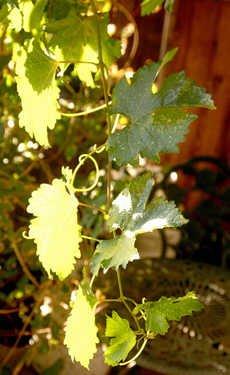 |
| Growth Habits |
Growth of Plants
Development of a plant body is accomplished through growth, defined as increase in number of cells and size of a species. Rates of growth in plants are achieved in two ways: first, by geometric increase, in which all cells of the organism divide simultaneously, especially in a young embryonic plant; second, by arithmetic increase, in which only one cell undergoes division, especially in mature plants with localized growth in a region at the root and shoot apices.
Generally, plants grow by a combination of both kinds of cell division to produce variations of form that finally develop a specific habit that is unique to a particular plant species.
Evolution of Growth Habits
The primary purpose for the evolution of different growth habits in plants is adaptation for permanent survival and reproduction of new individuals, typically under changing climatic conditions.
Water availability, especially during the growing season, is the single most important environmental factor that limits plant distribution and productivity on a global basis. Competition in the past among plants for available water, nutrients, space, and light enhanced the evolution of adaptive growth forms in plants.
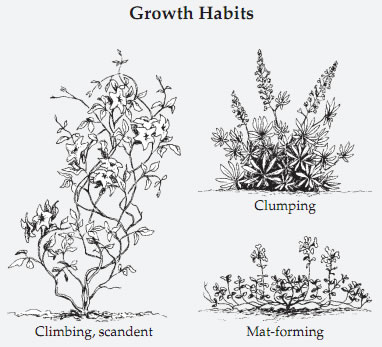 |
| Growth Habits |
Some plants developed wood as a mechanism to counter act the destructive effects of wind, ice, mechanical damage, and fire. Erect and dense growth habits evolved to resist wind effects and other mechanical damages. Plants without wood adapted prostrate, mat-forming, spreading, creeping, or climbing habits.
As animals interacted with plants and in the past, both evolved simultaneously. Various plants developed prostrate and mat-forming habits in order to endure intense grazing and trampling, or erect and tall growth forms to escape browsing and grazing.
 |
 |
In the past, individual plants that were able to adapt, survive, and produce more off spring were selected naturally for success. Different plants with varied growth habits colonized different habitats, becoming the dominant plants (largest or most abundant), and thereby the principal contributors in characterizing and sustaining different biomes.
The various kinds of growth habits which evolved result in a variety of forms. It is not uncommon for one species of plant to exhibit growth habits among its different varieties.
Climbing Plants
Climbing plants are also called vines. The stems trail along or coil around other plants or structures as they grow upward. Examples include cucumber (Cucumis sativus), morning glory (Ipomea species), and grape vine (Vitis species). Climbers characterize moist forests and woodlands.
Clump-Forming Plants
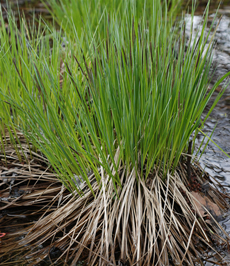 |
| Clump-Forming Plants |
Dense Plants
Dense plants grow many small, woody canes or stems very close together in an upright fashion. The majority are shrubs. Examples include Ephedra, southern arrow wood (Viburnum dentatum), mountain laurel (Kalmia latifolia), and creosote bush (Larrea tridentata). They characterize woodlands, grasslands, coastal vegetation, and deserts.
Erect Plants
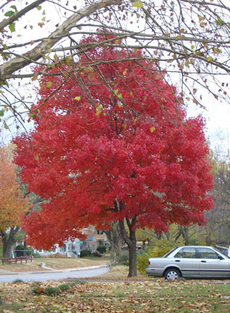 |
| Erect Plants |
Mat-Forming Plants
Mat-forming plants have many stolons (creeping stems) that grow in a trail along soil or water surfaces and spread out to produce a matlike cover. Examples include the grasses Cynodon and Digitaria, Kentucky bluegrass (Poa pratensis), crab grass (Digitaria sanguinalis), the aquatic ferns Salvinia and Azolla, andmosses, such as Sphagnum. They characterize grasslands, bogs, wetlands, secondary forest floors, and cultivated habitats.
Mound-Forming Plants
Mound-forming plants grow to form a rounded shape resembling a mound or swollen bump. Examples include the barrel cactus (Ferocactus and Echinocactus), several other species of cacti (such as Gymnocalycium), and Euphorbia gymnocalycioides. They characterize deserts, grasslands, and the tundra.
Open Plants
 |
| Open Plants |
Prostrate Plants
The stems of prostrate plants grow flat on the soil surface or almost touching (hugging) the ground but not trailing. Examples include the herbaceous milkpurslane weed (Euphorbia supina), common mullein (Verbascum thapsus), and some species of juniper. They are common in the tundra, grasslands, wetlands, and disturbed habitats.
Scandent Plants
Scandent plants have prominent stems in a leaning position. Examples include sugarcane (Saccharumofficinarum), coconut palm (Cocos nucifera), bearberry (Arctostaphylos uva-ursi), blackberry (Rubus fruticosus), and some bamboos (Bambusa). They characterize the dwarfed, woody trees in the timberline of the tundra, savanna, forest undergrowth, and coastal habitats.
Spreading Plants
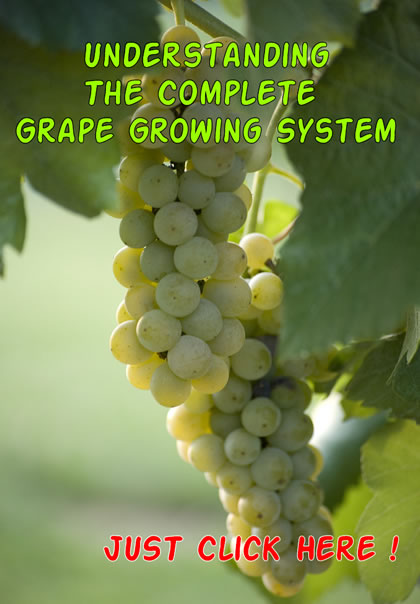 |
| The complete grape growing system |
Spreading plants exhibit a sprawling type of growth, resulting fromprofuse lateral branching in mostly woody or succulent stems. Examples include common juniper (Juniperus communis), blueberries (Vaccinium), prickly-pear cactus (Opuntia), Sumacs (Rhus), and ferns (such as Adiantum). They characterize forest undergrowth, grasslands, sandy coastal areas, deserts, cultivated lands, and some areas of the tundra.
Stemless Plants
Stemless plants have no visible stem above ground and are composed mainly of leaves or leaflike structures. Examples include common dandelion (Taraxacum officinale), Aloe vera, sisal (Agave), onion (Allium cepa), and liverworts (such as Marchantia polymorpha). They characterize aquatic and wetland vegetation, deserts, some grasslands, cultivated land, and wasteland.
- African Flora
African Flora With few exceptions, Africa?s flora (vegetation) is tropical or subtropical. This is primarily because none of the African continent extends far from the equator, and there are only a few high-elevation regions that support more temperate...
- Evolution: Convergent And Divergent
Evolution: Convergent and Divergent Some of the most dramatic examples of natural selection are the result of adaptation in response to stressful climatic conditions. Such selection may cause unrelated species to resemble one another in appearance and...
- Grasslands
Mongolian grassland Grasslands are areas of intermittent rainfall which favor grass growth. The grass helps the soil become rich by facilitating the accumulation of nutrients and decaying plant material. Grasslands once covered about a quarter of the...
- North American Flora
North American FloraThe world?s major biomes are all represented in the diverse vegetation of North America, from Arctic tundra in the north to deserts in the Southeast and the grasslands, wetlands, and various forest biomes between. Forest is the native...
- Weed Classification
How many plants have these weedy characteristics? Relatively few, in fact. There are approximately 250,000 species of plants in the world, but only about 200 species are considered to be major weed problems (Holm, et al., 1977). In addition to this small...


